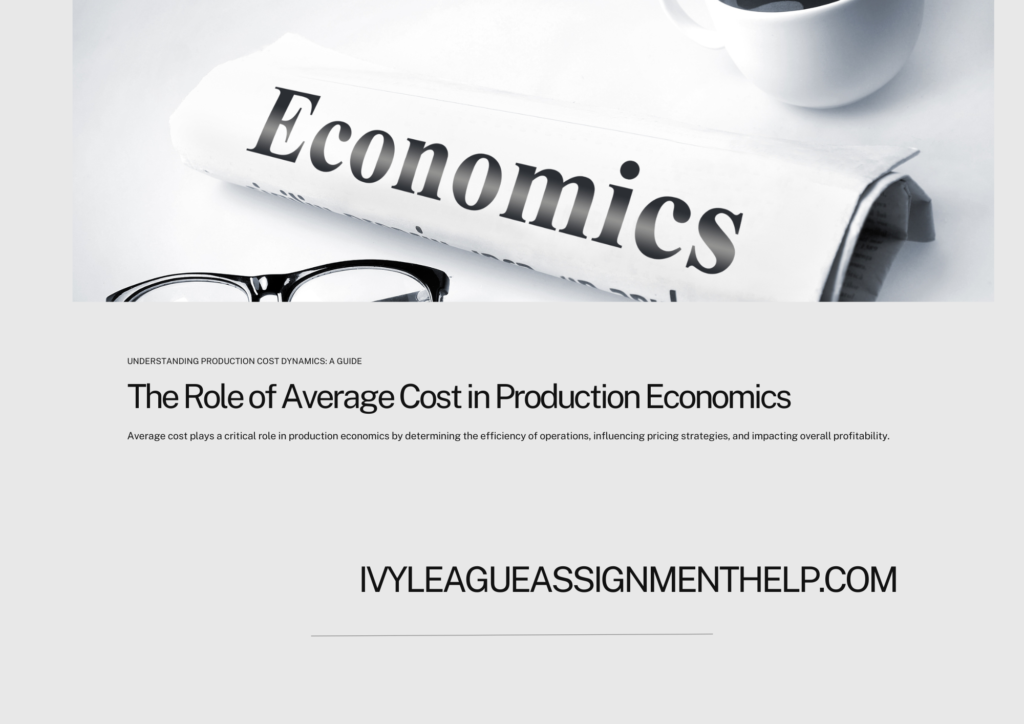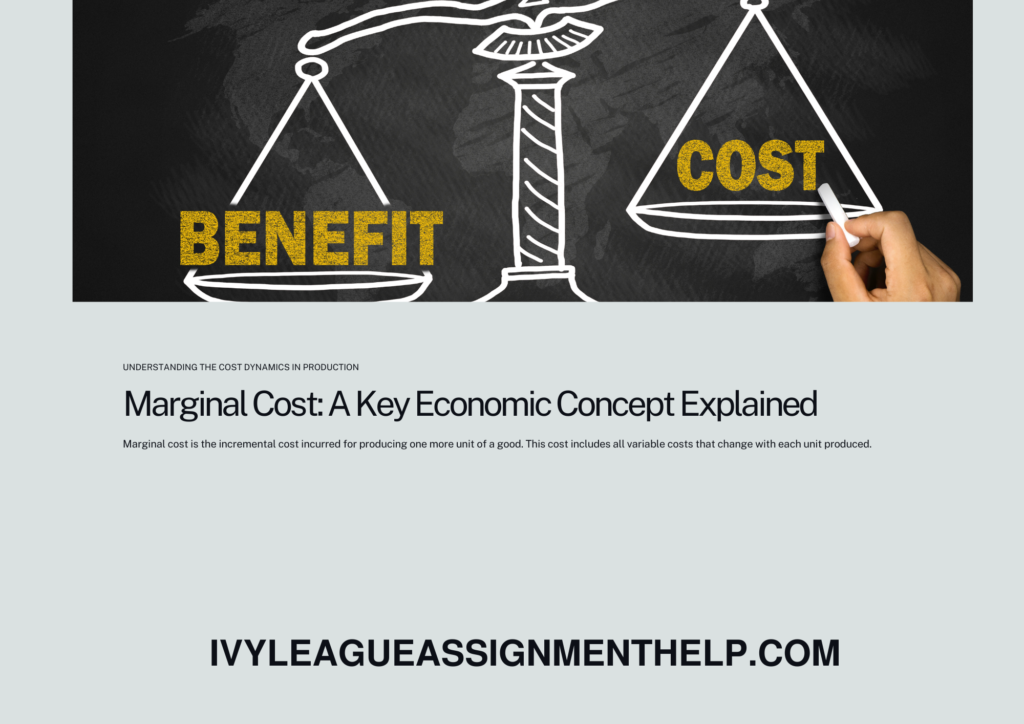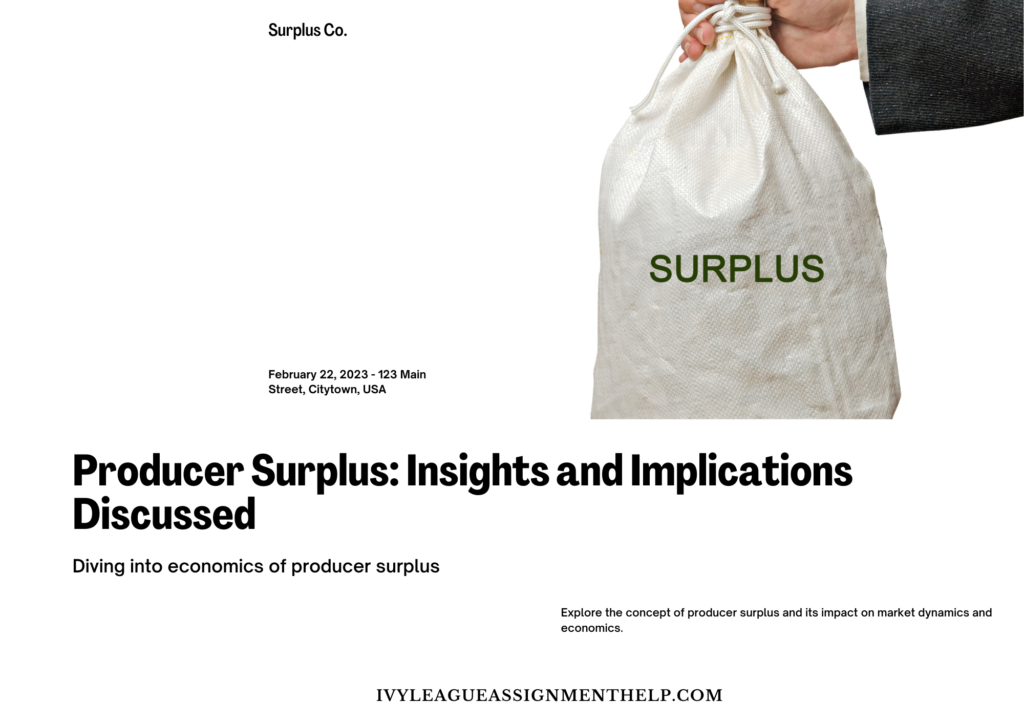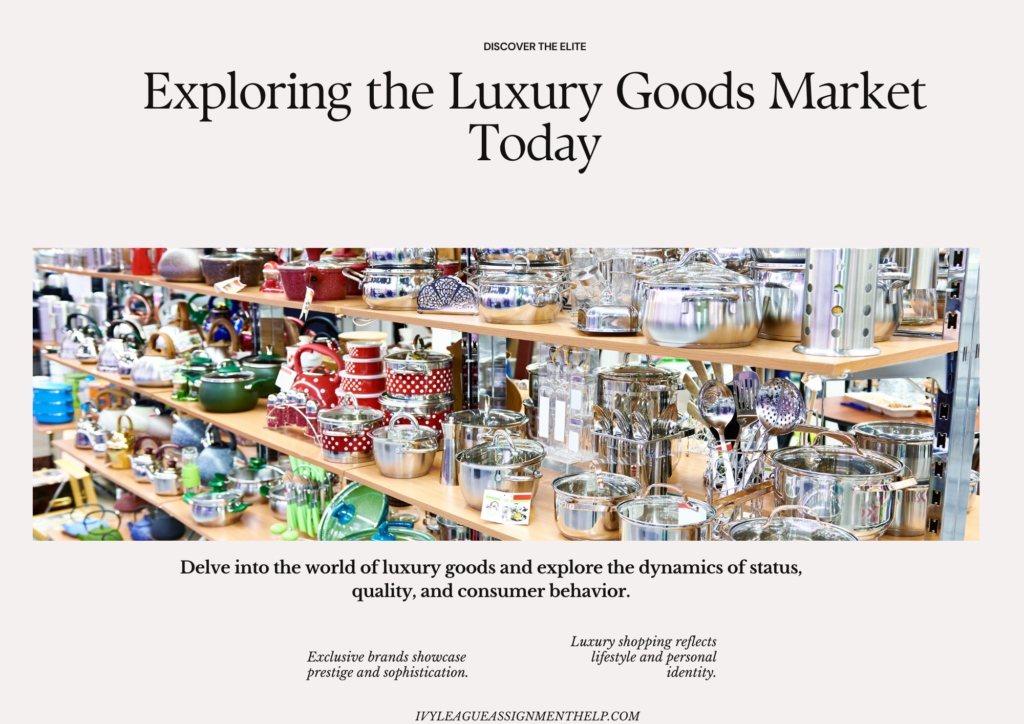Key Takeaways
- Fixed costs remain constant regardless of the level of production.
- Variable costs fluctuate with the level of production.
- Total costs are the sum of fixed and variable costs.
- Importance of cost concepts includes understanding production efficiency, pricing strategies, and profitability.
- Implications for businesses involve optimizing cost management, resource allocation, and strategic planning.
Introduction
Understanding cost concepts is fundamental for businesses to make informed decisions about production, pricing, and profitability. Costs are classified into fixed costs, variable costs, and total costs, each playing a crucial role in financial planning and operational efficiency. At ivyleagueassignmenthelp.com we help and guide students to delve into these cost concepts, their calculation methods, and their implications for business decision-making.
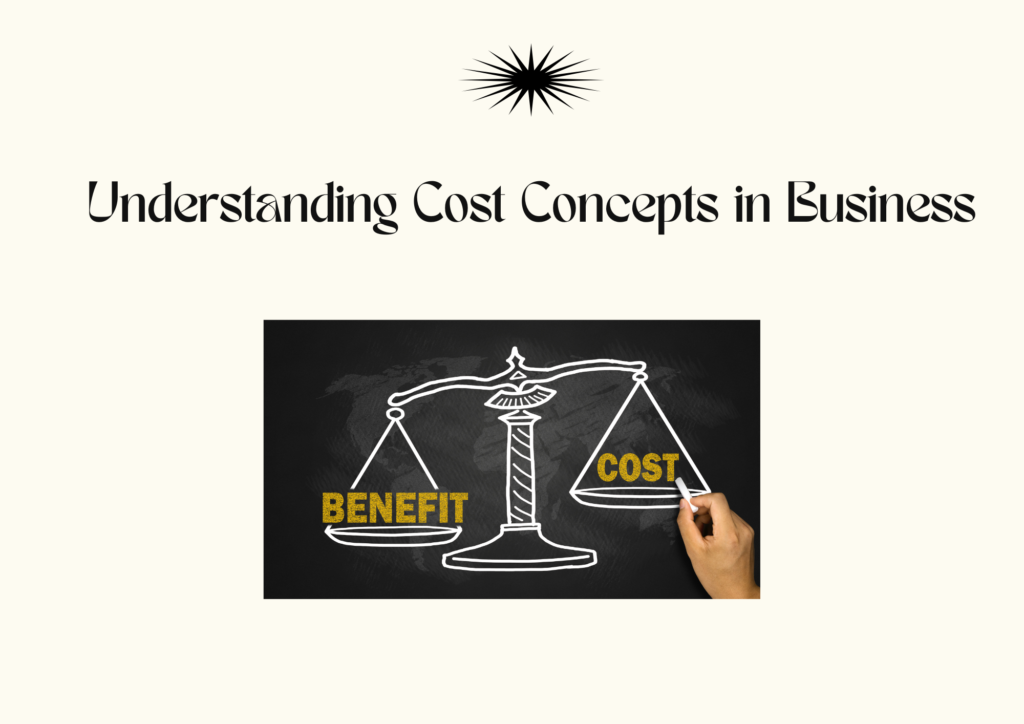
Fixed Costs
Definition of Fixed Costs
Fixed costs (FC) are expenses that do not change with the level of production or sales. These costs remain constant regardless of how much a firm produces and are incurred even when production is zero. Fixed costs typically include rent, salaries, insurance, and depreciation.
Characteristics of Fixed Costs
- Invariability: Fixed costs do not fluctuate with changes in production volume.
- Time-bound: Fixed costs are usually associated with a specific period (e.g., monthly rent).
- Non-avoidable: These costs must be paid regardless of production levels.
Examples of Fixed Costs
- Rent: Monthly payment for office or factory space.
- Salaries: Regular payment to employees not directly tied to production volume.
- Insurance: Premiums for property, liability, or other types of insurance.
- Depreciation: The gradual reduction in value of fixed assets over time.
Variable Costs
Definition of Variable Costs
Variable costs (VC) are expenses that change directly with the level of production. These costs increase as production increases and decrease as production decreases. Variable costs typically include raw materials, direct labor, and utilities.
Characteristics of Variable Costs
- Proportionality: Variable costs vary in direct proportion to production levels.
- Flexibility: These costs can be adjusted based on production needs.
- Production-dependent: Variable costs are incurred only when production occurs.
Examples of Variable Costs
- Raw Materials: Cost of materials used in the production process.
- Direct Labor: Wages paid to workers directly involved in manufacturing.
- Utilities: Costs for electricity, water, and other utilities used in production.
- Packaging: Expenses for packaging materials used to prepare products for sale.
Total Costs
Definition of Total Costs
Total costs (TC) are the sum of fixed and variable costs incurred by a business in the production of goods or services. Total costs provide a comprehensive view of the expenses associated with production and are crucial for pricing and profitability analysis.
Total Costs (TC) = Fixed Costs (FC) + Variable Costs (VC)
Characteristics of Total Costs
- Comprehensive: Total costs include all expenses related to production.
- Dynamic: Total costs change with production levels due to variable costs.
- Critical for pricing: Understanding total costs is essential for setting prices that cover expenses and generate profit.
Examples of Total Costs
- Manufacturing Costs: Combined fixed and variable costs of producing a specific number of units.
- Service Costs: Total costs associated with delivering a service, including fixed administrative costs and variable operational costs.
- Project Costs: Aggregate costs of all resources used in a project, including both fixed and variable expenses.
Examples of Fixed, Variable, and Total Costs
| Cost Type | Example | Description |
|---|---|---|
| Fixed Costs (FC) | Rent | Monthly payment for office or factory space |
| Salaries | Regular payment to employees | |
| Insurance | Premiums for property or liability insurance | |
| Depreciation | Gradual reduction in value of fixed assets | |
| Variable Costs (VC) | Raw Materials | Cost of materials used in production |
| Direct Labor | Wages paid to production workers | |
| Utilities | Costs for electricity and water | |
| Packaging | Expenses for packaging materials | |
| Total Costs (TC) | Manufacturing Costs | Combined fixed and variable costs of production |
| Service Costs | Total costs of delivering a service | |
| Project Costs | Aggregate costs of all resources in a project |
Cost Behavior and Business Implications
Fixed Costs Behavior
Fixed costs remain constant regardless of production levels. This invariability means that as production increases, fixed costs are spread over more units, reducing the fixed cost per unit.
Variable Costs Behavior
Variable costs fluctuate with production levels. As production increases, total variable costs rise, but the variable cost per unit remains constant.
Total Costs Behavior
Total costs change with production levels due to the variable cost component. Understanding the behavior of total costs helps businesses set prices, forecast expenses, and determine profitability.
Break-Even Analysis
Definition of Break-Even Analysis
Break-even analysis determines the production level at which total revenue equals total costs, resulting in neither profit nor loss. The break-even point (BEP) is crucial for pricing strategies and financial planning.
Formula for Break-Even Point
The break-even point is calculated as:
BEP (units) = Fixed Costs (FC)\Selling Price per Unit – Variable Cost per Unit
Example Calculation
Suppose a company has fixed costs of $10,000, a selling price of $50 per unit, and a variable cost of $30 per unit. The break-even point is:
BEP = $10,000\$50 – \$30 = $10,00\$20= 500 units
Implications for Businesses
Pricing Strategies
Understanding fixed, variable, and total costs helps businesses set prices that cover expenses and generate profit. By calculating the break-even point, firms can determine the minimum sales volume required to avoid losses.
Cost Management
Effective cost management involves controlling both fixed and variable costs. Businesses aim to reduce unnecessary fixed costs and optimize variable costs to enhance profitability.
Resource Allocation
Resource allocation decisions are influenced by cost behavior. In the short run, firms focus on managing variable costs to adjust production levels. In the long run, they consider fixed costs when planning capacity expansions and investments.
Profitability Analysis
Profitability analysis requires a thorough understanding of cost concepts. By analyzing total costs and comparing them with total revenue, businesses can assess their financial performance and make informed decisions to improve profitability.
Real-World Case Studies
Case Study 1: Manufacturing Firm
A manufacturing firm produces electronic devices with fixed costs of $100,000 per month (rent, salaries, and depreciation) and variable costs of $50 per unit (materials, labor, and utilities). The firm’s total costs for producing 1,000 units are:
Fixed Costs (FC) = $100,000
Variable Costs (VC) = 1,000 units
$50unit = $50,000
Total Costs (TC) = $100,000 + $50,000 =$150,000
Impact on Business Decisions:
- Pricing Strategy: The firm sets a price that covers total costs and generates profit.
- Cost Management: The firm monitors fixed and variable costs to optimize production efficiency.
- Break-Even Analysis: The firm calculates the break-even point to determine the minimum production level needed to avoid losses.
Case Study 2: Service Provider
A service provider offers consulting services with fixed costs of $20,000 per month (rent, salaries, and insurance) and variable costs of $100 per hour of service (labor and materials). The firm’s total costs for providing 300 hours of service are:
Fixed Costs (FC) = $20,000
Variable Costs (VC) = 300 hours
$100 = $30,000
Total Costs (TC) = $20,000 + $30,000 = $50,000
Impact on Business Decisions:
- Pricing Strategy: The service provider sets hourly rates that cover total costs and generate profit.
- Cost Management: The provider controls fixed and variable costs to maintain profitability.
- Break-Even Analysis: The provider calculates the break-even point to determine the minimum service hours needed to avoid losses.
Real-World Case Studies
| Case Study | Fixed Costs (FC) | Variable Costs (VC) | Total Costs (TC) |
|---|---|---|---|
| Manufacturing Firm | $100,000 | $50,000 (1,000 units @ $50) | $150,000 |
| Service Provider | $20,000 | $30,000 (300 hours @ $100) | $50,000 |
Frequently Asked Questions
What are fixed costs?
Fixed costs (FC) are expenses that
do not change with the level of production or sales. These costs remain constant regardless of how much a firm produces and are incurred even when production is zero. Examples include rent, salaries, insurance, and depreciation.
What are variable costs?
Variable costs (VC) are expenses that change directly with the level of production. These costs increase as production increases and decrease as production decreases. Examples include raw materials, direct labor, utilities, and packaging.
What are total costs?
Total costs (TC) are the sum of fixed and variable costs incurred by a business in the production of goods or services. Total costs provide a comprehensive view of the expenses associated with production and are crucial for pricing and profitability analysis.
How is the break-even point calculated?
The break-even point (BEP) is calculated by dividing fixed costs by the difference between the selling price per unit and the variable cost per unit:
BEP (units) = Fixed Costs (FC) – Variable Cost per Unit
Why are cost concepts important for businesses?
Cost concepts are important for businesses because they help in understanding production efficiency, setting pricing strategies, and analyzing profitability. By understanding fixed, variable, and total costs, businesses can make informed decisions about resource allocation, cost management, and strategic planning.

